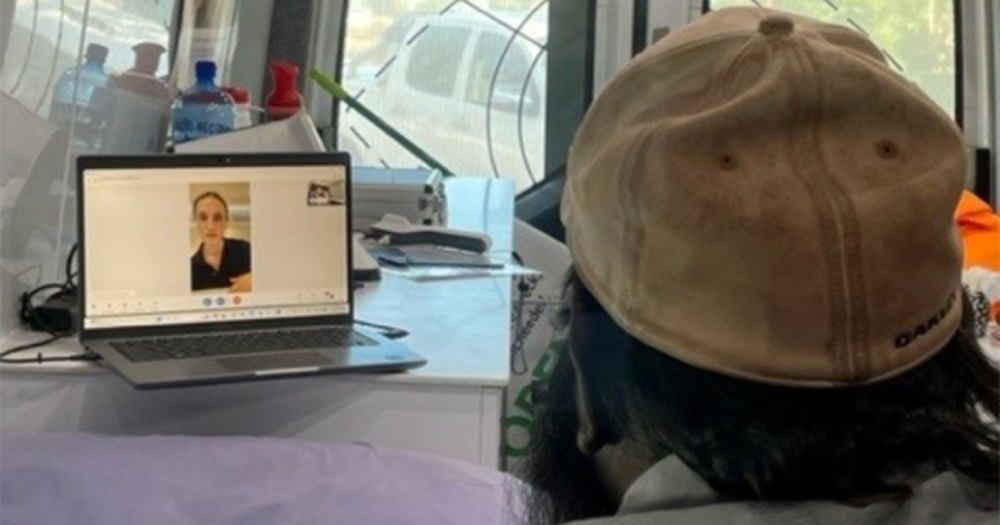AI system used to tackle eye health inequalities in outback Australia

Imagine living in a place so vast and remote that a doctor's visit feels like a luxury. For thousands of Australians in the outback, this isn't imagination — it's reality. But now, thanks to a groundbreaking AI-driven mobile eye health service, a new chapter is being written. This innovation isn't just about tech; it's about saving sight and, quite possibly, saving lives. With a state-of-the-art retinal camera developed in partnership with UCL and Moorfields researchers, rural and Indigenous Australians are getting access to care that could prevent blindness from untreated diabetes.
As Professor Angus Turner puts it, "By improving access to eye screening, we're ensuring that people living in remote places have access to diagnosis that can prevent blindness with early treatment. This innovation is a game-changer."
How does it work?
Picture this: a truck rolls into the Pilbara, one of the most sparsely populated regions in Australia. Inside, a cutting-edge retinal camera awaits. Patients get their eyes scanned, and within minutes, an AI model interprets the results. If the system flags any issues, an instant telehealth appointment with an ophthalmologist is arranged. No waiting weeks for a diagnosis. No traveling hundreds of miles to the nearest clinic. It's healthcare, simplified and immediate.
The secret sauce? A novel AI foundation model called RETFound, developed by researchers at UCL and Moorfields. Trained on over 1.6 million anonymized eye images, RETFound takes diabetic retinopathy screening to a whole new level. It even uses locally gathered data to fine-tune algorithms for Indigenous populations. The AI doesn't just stop at detecting eye diseases; it's set to expand into spotting cardiovascular conditions — a monumental leap in preventive care.
Dr. Mark Chia, one of the masterminds behind the project, says it best: "By bringing together world-leading data science and medical AI expertise, we've developed an original approach to saving sight and saving lives in remote parts of the country."
Why does it matter?
Indigenous Australians are nearly three times more likely to go blind than their non-Indigenous counterparts. Diabetic retinopathy is the leading cause of blindness in working-age people worldwide. Add to that the harsh reality of geographic isolation and limited health resources, and you've got a recipe for health disparities that are hard to ignore.
This AI-powered system is leveling the playing field. It's not just about delivering diagnoses; it's about addressing systemic inequality.
Professor Pearse Keane highlights the bigger picture: "There is immense potential for medical AI to reduce health inequalities in low-resource settings, and this is an exciting use case."
By tackling barriers like distance and accessibility, this innovation brings equity to a region that has long been overlooked.
The context
The Pilbara region is no ordinary backdrop. With a population of just 45,000 spread across an area almost twice the size of the UK, access to healthcare has always been a logistical nightmare. But the stakes here are higher than mere convenience. Blindness and cardiovascular disease are not just medical issues; they're social and economic ones. The gap in health outcomes between Indigenous and non-Indigenous Australians is stark, and bridging it is a matter of urgency.
Backed by an AU$5 million grant from the Western Australian government, this mobile service is more than a medical breakthrough; it's a lifeline. Lions Outback Vision, the non-profit behind the initiative, has teamed up with tech giants like Google and Topcon to ensure this lifeline is as robust as it is revolutionary.
As Professor Turner aptly puts it, "This deployment has already begun to make a significant impact." And for the people of Pilbara, it's not just about seeing better; it's about a future that's brighter in every sense of the word.
💡Did you know?
You can take your DHArab experience to the next level with our Premium Membership.👉 Click here to learn more
🛠️Featured tool
 Easy-Peasy
Easy-Peasy
An all-in-one AI tool offering the ability to build no-code AI Bots, create articles & social media posts, convert text into natural speech in 40+ languages, create and edit images, generate videos, and more.
👉 Click here to learn more


